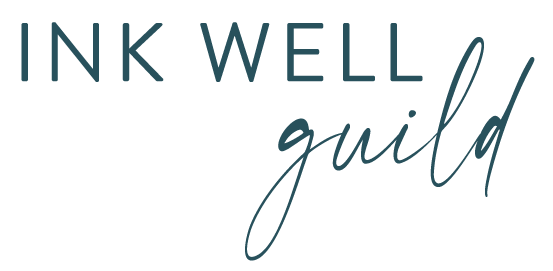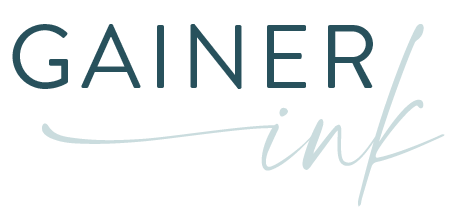The new year is a great time to plan and look ahead, whether your new year starts the traditional way on January 1 or whether you prefer to start at the beginning of a school year (maybe you’re juggling kids and your business!).
To help you out, I’ll give you some specific things you can do to set your business up right for the new year, whenever that begins for you. Plus, some strategic planning on how to shape your business around the life you want.
Administrative
I’m not saying to put off doing all administrative tasks in your business until the new year. No way, dude! Although that would be nice, it’s not feasible. I’m talking about the big picture admin tasks that you do every once in a while, that help your business flow more smoothly.
Update Your Website
Maybe you have a plug-in that automatically does this for you, but if you don’t, make sure you update the footer in your site that states the year. Gotta stay current!
Raise Your Rates
If you’ve had a client for more than six months, the new year is a good time to raise your rates. I do suggest giving clients some warning. You could send them an email now saying, “Hey, these are my 2020 rates. I know I’m springing this on you, so I’m happy to do X number of hours or assignments at the old rate. But moving forward, it’s going to be (whatever this new rate is).”
Update Your Portfolio
Take stock of all the stuff you wrote last year, find the links of what got published, and do a Google search for your name to see if there’s stuff out there that you didn’t know even got published yet. Also, if you have one of those “As Seen On” banners on your website, update that too.
Set Up New Trackers and Spreadsheets
Get your 2020 vision on and set up your clips, pitches, and payment trackers! I still keep my payment tracker in Google sheets. I’ll be moving on up from this system soon, but for now, I’ve updated it to 2020.
Taxes
Set up new tax folders for your 2020 receipts. These can be either paper, digital, or both. This will make your life easier when it comes time to do your taxes.
If you’re outsourcing your taxes (yes, please!), then contact a CPA now to make sure you get on their calendar, before their schedules get too crazy. And for the love of calculators, please don’t wait for the second week of April! You want to stay on your CPA’s good side, right?
Mail your last quarterly tax payment. If you’re a freelancer, you should be making quarterly tax payments, usually between 20 to 30 percent of your income. Your last quarterly payment is due in January, so if you made more than you thought you were going to when you mailed in your other three payments during the year, you can use this last payment to “even up.”
Refresh your Bio
I like my bio to reflect the growth that I’ve had over the past year. You don’t have to do this. Some people do it every five years, so it’s up to you. But I like to keep it nice and fresh!
Check Your Metrics
If you already have Google Analytics (GA) installed on your website, check your beginning vs year-end metrics, and your growth rate. What were your high months? What were your low months? How did people find you?
You can adjust your future strategy based on your findings–more of what’s working, tweak what isn’t. If you don’t have GA, then you can set it up, if you have a website.
Collect Your Training
Remember all those shiny new courses you bought over the last year? Collect them all into one place. This helps keep track of how much you are spending and whether or not you are actually taking the training and implementing it.
You can also check the refund policy of any course that you have buyer’s remorse for and think that you won’t actually take or use. If you are within the refund window, go ahead and politely ask for a refund. You’re not a bad person–just be polite!
List and Schedule Your Loose Ends
Start with the courses that you WILL be taking–schedule time for them! Otherwise, speaking from experience, you probably won’t take them, no matter how much you want to.
Look over your pitch files and see if there were any potential clients who noted that they would need writers in the future. If it’s been a few months, circle back and ask if their needs have changed. Let former clients that you haven’t worked with in a while know that you have availability (if you do) and would love to work with them again.
Mindset and Planning
Mindset is an important part of your business. Starting with a fresh mindset in the new year can be helpful if you’ve been dragging. If you’ve been killing it lately, then keep on!
You can help your mindset by planning, using some of your achievements and not-so-great moments from the past year to make great moves this year. When you know that you will have forward momentum this year, your mind will be able to focus on positive goals.
Review Your Achievements
Make a list of your achievements from the past year. If you keep a “great job” file, look at that. The positive reviews or emails from that can help boost your spirits and jog your memory.
Think about what mindset difficulties you overcame as well. Perhaps you broke through the fear of cold pitching. Or you kept going when you wanted to quit.
Review Your Trouble Spots
What went wrong when things didn’t work out? What were the trouble spots? Were there any common factors? How can you take steps to avoid those things this year?
Decide What to Leave and to Bring
Taking into account your accomplishments and trouble spots from the past year, decide what you want to do again and what you don’t. Which habits are working out and which do you need to change? Are there any schedule tweaks you need to make that would help your life run more smoothly?
What pressures need to go? Is there a client that pays well but is such a pain that your peace of mind is suffering too much? Is there a project that you love but pays you peanuts?
Decide Your Next Move
Now you can figure out what you want your business to look like a year from now. You can be general, such as “I want to be able to quit my job.” Or you can get very specific, such as “I want to be making X number of dollars every month/working X number of hours/have by-lines on X, Y, and Z publications/break into this new market.”
Think about what you want the end of this year to look like. Then you can start laying out your specific goals.
Make your Annual Goals
Even if it’s a basic income goal and that’s it, break it down by monthly targets. For more details on breaking down your annual goals, see my post on Goal Setting and Quarterly Planning for Freelance Writers.
Questions?
If you have any questions about how to do goal setting and planning for your own business, I recommend that you come into my free Facebook group. Let’s talk about it!
Post what your goals are, ask a question about where you’re stuck or where you’re not clear. For example, “This is my goal, but I’m not sure how to break it down.” Let’s talk about it over in the Facebook group.
Clips Camp
If you need clips to round out your portfolio to help you reach your goals, be sure and check out Clips Camp.
It’s my three-week course for new and advanced-new freelance writers who want to get started with high-paid client work. If you’re on Upwork or Fiverr and are miserable, or if you haven’t even done anything to get started and you don’t know what the first step is, Clips Camp is for you.
I teach you how to put together a solid portfolio of writing samples that position you as the kind of awesome writer that awesome clients want to hire. So if you want in on that or you just want more information, go to clipscamp.com and I’ll see you on the inside!




